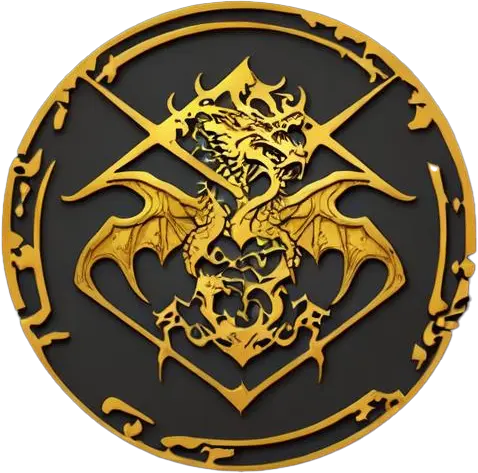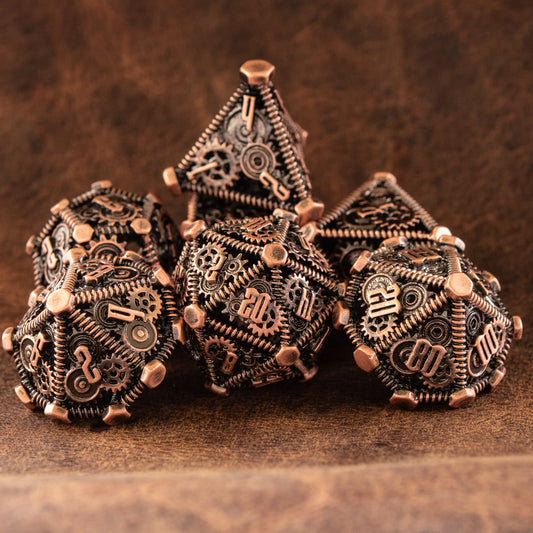What Are DND Dice An In-Depth Guide to Dungeons & Dragons Dice Sets
Share
What Are DND Dice? An In-Depth Guide to Dungeons & Dragons Dice Sets
Introduction
Dungeons & Dragons (D&D) is a beloved tabletop role-playing game that has captivated the hearts of gamers for decades. A key component of this game is the use of dice, often referred to as DND dice. These dice are more than just tools; they are the magical artifacts that determine the fate of characters and the outcome of their adventures. In this comprehensive guide, we will explore what DND dice are, the different types of dice used in D&D, and their specific roles in gameplay.
Understanding DND Dice
What Are DND Dice?
DND dice are polyhedral dice used in Dungeons & Dragons and other tabletop role-playing games to determine the outcomes of various actions and events within the game. A standard set of DND dice typically includes seven different dice, each with a distinct number of sides and specific uses. The dice in a standard set are:
- d4 (tetrahedron): 4-sided die
- d6 (cube): 6-sided die
- d8 (octahedron): 8-sided die
- d10 (pentagonal trapezohedron): 10-sided die
- d12 (dodecahedron): 12-sided die
- d20 (icosahedron): 20-sided die
- d00 (percentile die): 10-sided die used for percentile rolls
The Role of Dice in Dungeons & Dragons Gameplay
In Dungeons & Dragons, dice are used to introduce an element of chance and unpredictability. They determine the success or failure of actions, the amount of damage dealt in combat, the effectiveness of spells, and much more. The most commonly used die in D&D is the d20, which is used for attack rolls, skill checks, and saving throws.
Types of DND Dice and Their Uses
The d20 (Icosahedron)
The d20 is the signature die of Dungeons & Dragons and is used to determine the success or failure of most actions. When a player attempts an action that requires an element of chance or skill, such as attacking an enemy or making a skill check, they roll a d20 and add any relevant modifiers from their character sheet. The result is then compared to a target number, known as the Difficulty Class (DC), to determine success or failure.
The d12 (Dodecahedron)
The d12 is often used to determine damage for large weapons or powerful spells. It has twelve pentagonal faces and is less commonly used than the d20 but is still an important part of the game. For example, a barbarian wielding a greataxe might roll a d12 to determine the damage dealt to an enemy.
The d10 (Pentagonal Trapezohedron)
The d10 is used for various purposes, including determining damage and making percentile rolls. A standard set of DND dice includes two d10s, one numbered 0 to 9 and the other 00 to 90 by tens. To make a percentile roll, players roll both d10s and add the results together to get a number between 1 and 100. This is often used for determining success rates or random outcomes with a degree of precision.
The d8 (Octahedron)
The d8 is commonly used to determine damage for weapons that can be wielded in one hand, such as longswords and battleaxes. It has eight triangular faces and is also used for various spells and abilities.
The d6 (Cube)
The d6 is perhaps the most familiar die, as it is the same as the dice used in many board games. In Dungeons & Dragons, the d6 is used for a variety of purposes, including determining damage for smaller weapons, rolling for attributes during character creation, and calculating the effects of certain spells.
The d4 (Tetrahedron)
The d4 is a four-sided die often used to determine damage for the smallest weapons, such as daggers and darts. It is also used for some healing spells and other minor effects. The d4 is unique in that it has several numbers on each side, and the result is determined by the number that appears along the bottom edge of the die.
The Percentile Die (d00)
The percentile die is used in conjunction with the standard d10 to make percentile rolls. This type of roll is used to determine random percentages during gameplay, such as the likelihood of a trap being triggered or the success rate of a rare event.
Choosing the Right DND Dice Set
Dice Sizes and Materials
When it comes to choosing a set of DND dice, there are various sizes and materials to consider. Most dice are sized to a standard of 16mm, but you can find larger or smaller dice depending on your preference. The material of the dice can also vary, with common options including plastic, resin, metal, and even precious stones.
Plastic and resin dice are lightweight, durable, and come in a wide range of colors and designs. Metal dice, on the other hand, have a satisfying heft and a sleek, polished look. However, they can be heavier in the hand and may cause damage to delicate surfaces when rolled, so a dice tray is recommended.
Dice Designs and Themes
The design of DND dice goes far beyond simple colors and patterns. Many sets feature elaborate themes that reflect the fantasy world of Dungeons & Dragons. You can find dice with dragons, skulls, runes, and other fantastical elements etched or painted onto them. Some dice sets are designed to look like ancient relics, with weathered textures and antique finishes, adding a touch of history and mystery to your game.
Glow-in-the-dark and UV-reactive dice are also popular, providing a magical glow that can make nighttime gaming sessions even more immersive. Transparent and semi-transparent dice, often filled with glitter or other decorative elements, add a touch of sparkle and wonder to your rolls.
Matching Dice to Your Character
When choosing a dice set, consider the theme or aesthetic of your character. For instance, if your character is a spellcaster, you might opt for a set with beautifully crafted, magical-looking dice. On the other hand, a set featuring rugged, metallic dice might be more suitable for a warrior character. Aligning your dice set with your character's theme can make your game more fun and visually pleasing.
Dice Accessories
Dice Trays
Dice trays are useful accessories that keep your dice from rolling all over the place and protect your table. They provide a designated spot to roll your dice, making everything neater and less clattery. Dice trays are usually made of leather, faux leather, wood, or cardboard and give your dice a cushioned area to land on, which helps them last longer.
Dice Bags
Dice bags come in various sizes, materials, and designs, from simple cloth pouches to fancy embroidered ones. They make it easy to carry your DND dice around and let you show off your style. Whether you prefer sleek leather, soft cloth, or colorful themed bags, there is something out there for everyone.
Dice Towers
Dice towers are cool gadgets that mix up your dice rolls as they tumble through different levels before landing in a tray. They make your dice rolls more exciting and fair and come in various fun designs, from medieval castles to futuristic themes.
Storage Solutions
Keeping your dice collection in order can be a challenge, especially if you have a lot of them. Storage solutions like dice boxes, compartmentalized trays, and display cases keep your DND dice safe and make it easy to find the right set when you need it. Many of these storage options look awesome, so you can show off your dice collection in style.
Properly Storing and Caring for Your DND Dice
Dice are a crucial part of DND and many other role-playing games, so taking good care of them is essential. Here are some tips to maintain your dice collection:
- Handle with Clean Hands: Oils and dirt from your fingers can build up on the dice, potentially affecting their appearance and how they roll. Wash your hands before touching your dice to keep them free from gunk.
- Store in a Good Container: Use a dice bag or dice case to protect your dice from scratches, dust, and damage. A soft and padded option is usually best.
- Roll on a Proper Surface: Hard or rough surfaces can chip or scratch your dice. Dice trays provide a cushioned area for your dice to land on, which helps them last longer.
- Check for Wear and Tear: Regularly inspect your dice for scratches, cracks, or chips that could affect their rolling. Replace any damaged dice to keep your game fair.
By following these simple tips, your dice collection will stay in great shape, ready for many more epic adventures in your favorite role-playing game.
Exploring the Magic of Dice-Rolling in Dungeons & Dragons
Dungeons & Dragons has been sparking the imaginations of players for over forty years. At the core of this game is a simple yet powerful tool: dice. From the modest d4 to the impressive d20, these little polyhedral objects add a touch of magic to every gaming session.
Rolling these magical artifacts is a beloved ritual for DND players, with each roll bringing a wave of excitement and anticipation. There is a special thrill in waiting to see the outcome of a crucial attack roll against a fierce dragon or figuring out the odds of successfully pulling off a daring pickpocketing attempt. The unpredictability of dice-rolling adds an element of surprise to the game, keeping everyone on their toes and reminding them that even the best plans can go awry or lead to amazing victories.
In the world of Dungeons & Dragons, dice take on a life of their own. They become a gateway through which players experience the ups and downs of their characters' journeys. The sound of polyhedral dice clattering on the table is like music, and every roll has the potential to change the course of an epic adventure. So as you begin your new quests for finding mythical treasure, fighting nasty creatures, and crafting tales of heroism, never underestimate the magic within the humble dice of D&D.

